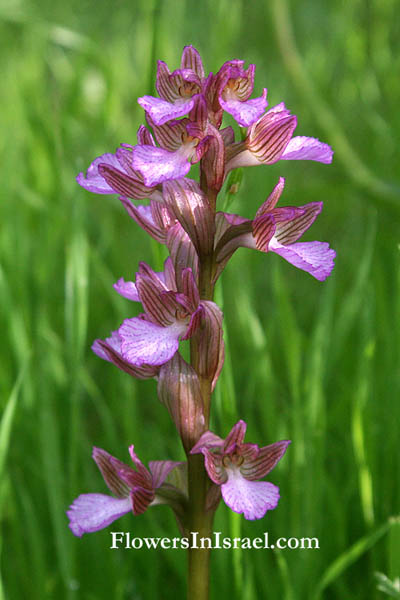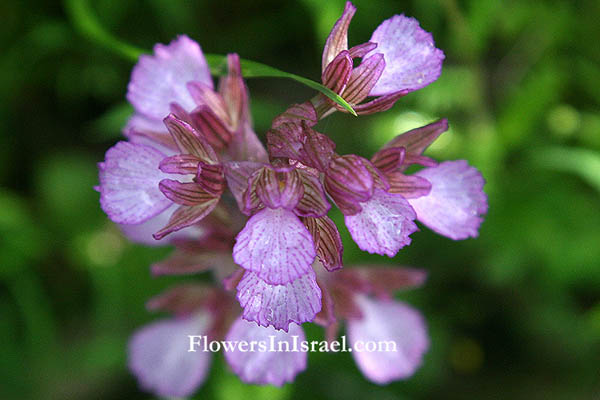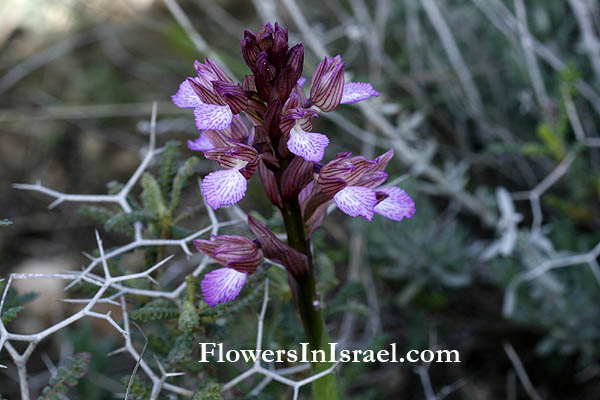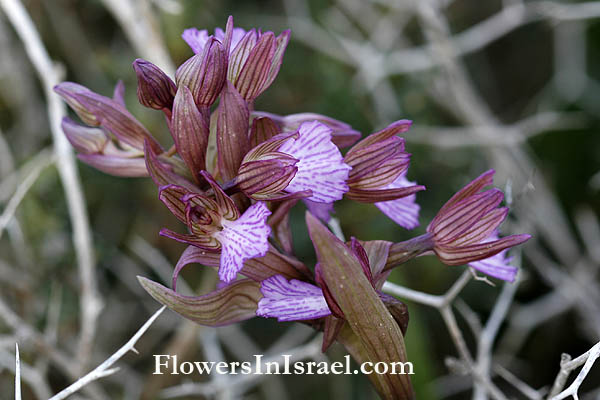Vermeulenia papilionacea, Pink Butterfly Orchid,
Hebrew: סחלב פרפרני, Arabic:سحلب فراشي
| Scientific name: | Orchis papilionacea L. | |
| Synonym name: | Orchis caspia Trautv., Anacamptis papilionacea (L.) R.M.Bateman, Vermeulenia papilionacea (L.) Á. Löve & D. Löve | |
| Common name: | Pink Butterfly Orchid | |
| Hebrew name: | סחלב פרפרני | |
| Arabic name: | سحلب فراشي | |
| Plant Family: | Orchidaceae, סחלביים |

Location: Hararit, Lavra Netofa, Lower Galilee, Misgav, הררית , מבדד נטופה |
| Life form: | Geophyte | |
| Stems: | 7,5-12,5 cm long | |
| Leaves: | Alternate, rosette, entire | |
| Flowers: | Inflorescence a lax spike; pink, purple; sepals and petals much darker than the lip, which is covered with darker streaks and dots | |
| Fruits / Pods: | Capsule | |
| Flowering Period: | February, March, April | |
| Habitat: | Batha, Phrygana | |
| Distribution: | Mediterranean Woodlands and Shrublands, Montane vegetation of Mt. Hermon | |
| Chorotype: | Mediterranean | |
| Summer shedding: | Ephemeral |

Derivation of the botanical name: Orchis, ορχιϛ, "testicle" (here, shape of), from the rootform of some species. For that reason, Orchis has been regarded since antiquity as an aphrodisiac. papilionacea, papilio, butterfly; aceus, resembles, of..., ...like; butterfly like. caspia , from the shores of the Caspian Sea. Anacamptis<, anakampto, bend back, referring to the spur or to the reflexed tracts or pollina. Vermeulenia, named after P.Vermeulen, Nederland. The Hebrew name: סחלב, sahlav, Arabic sahlab, corrupted from tha'lab in husa al-tha'lab (=the fox’s testicles), the Arabic name of the tubers of the Orchis mascula (so called from the resemblance of the roots to testicles).





|